Reliving in Williamsburg
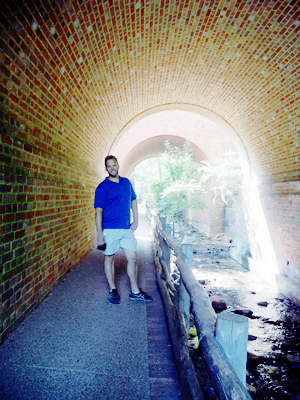 Have you ever wondered how guns were built for solders in the revolutionary war? How about how wool and cotton got turned into a usable product before we had machines to do it? Maybe building a house before electric saws? Well you can see it happening firsthand every day in Colonial Williamsburg!
Have you ever wondered how guns were built for solders in the revolutionary war? How about how wool and cotton got turned into a usable product before we had machines to do it? Maybe building a house before electric saws? Well you can see it happening firsthand every day in Colonial Williamsburg!
Brian and I visited the historic town last year with my parents and we were sure to make time again this year as we headed down through Virginia. I have been spending time in Williamsburg since I was a child–my grandmother grew up here and its also where she met my grandfather, s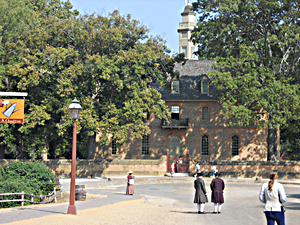 o it is a special place for me.
o it is a special place for me.
Williamsburg has only gotten better over the years! They employ passionate reenactors who are great teachers. These characters bring history to life! In the days before the American Revolution Colonial Williamsburg was the English capital of the colony of Virgina. The reenactors display an interesting time just before the Revolutionary War when citizens were becoming upset with English taxation. Throughout the town visitors can find English flags marking historical demonstrations.
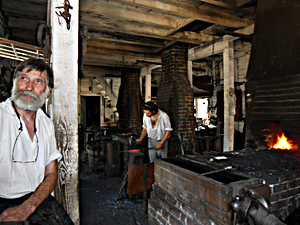 On the main street we found a 1700’s wig shop. Wigs were in fashion for men and women alike, the larger and more curls that were in a wig was a sign of wealth. The shop is still making wigs by hand mostly the same way they did back then. Now, with the help of elastic the wearer doesn’t need to shave their head to get a well-fitted wig!
On the main street we found a 1700’s wig shop. Wigs were in fashion for men and women alike, the larger and more curls that were in a wig was a sign of wealth. The shop is still making wigs by hand mostly the same way they did back then. Now, with the help of elastic the wearer doesn’t need to shave their head to get a well-fitted wig!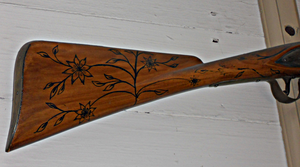
We learned that the value of a buck has changed a lot since revolutionary days. The gunsmith explained that sixteen deer hides or “bucks” would buy a hand-made gun. Due to the fact that the guns were all made by hand, the barrel size and bullet size varied! It also 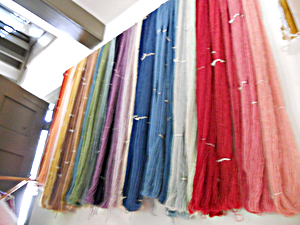 meant that customers could get custom designs, this is one of the guns I really liked!
meant that customers could get custom designs, this is one of the guns I really liked!
As an avid knitter and other like crafts the spinning house is always one of my favorite places to visit. A spin house would buy local wool and cotton and then dye them with dyes bought from England. The skeins would be sold or used to weave rugs. At the spinning house women could have a dress or other linens dyed to the new in style color without having to buy a new dress.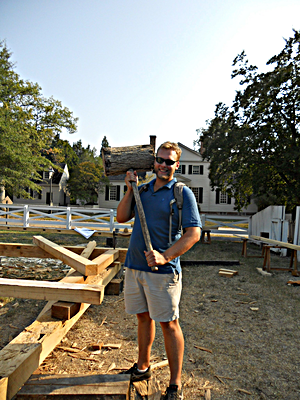
Our last stop was the joiner house. The man we met there was hand carving the decorative molding that goes into every corner of a new house and the framework for the house’s windows. It was cool to see him hand shave the wood down to size. He said “ you spend the first year just learning how to level the wood straight” all the craft workman and women work as apprentices, learning their trades the old way with no new-aged short cuts.
We saw how serious this was when we went out behind the joiner and found carpenters working in the hot sun. They were building a wall for a kitchen building that will be going up in a different area of the historical town. They were hand cutting joints to fit i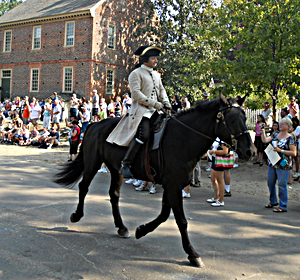 nto the frame of the wall. The workmanship is amazing and the joy these men get out of sharing their knowledge is inspiring.
nto the frame of the wall. The workmanship is amazing and the joy these men get out of sharing their knowledge is inspiring.
I had so much fun on this trip back in time! I learned from invigorated educators first hand how some products used to be made. I left feeling inspired and ready to pick up a saw and start building a wall! I can’t wait to go back and see what’s new in this old town.

